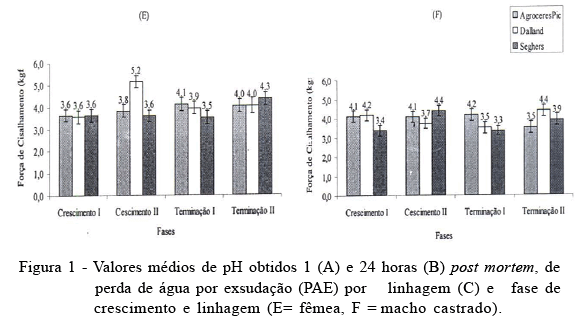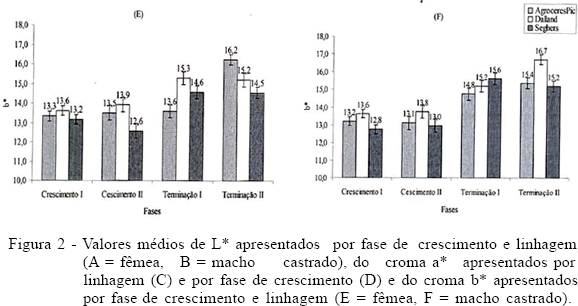The aim of this study was to determine the meat quality characteristics of swine sire lines from different slaughter weights. In this study were used 88 castrated piglets (castrated males and females) per sire line (AgroceresPic, Dalland and Seghers), with initial age of 74 days and live weight of 30kg. The experiment was divided in four phases (Growing I, Growing II, Finishing I and Finishing II). At the end of each experimental phase, 60 animals were slaughtered (10 by lineage/sex) for meat quality determinations. The pH and the temperature were determined 1 and 24 hours post mortem. Meat samples were collected for color, water loss by exudation (WLE), water loss by cooking (WLC) and shear force determinations. Samples of AgroceresPic and Dalland carcasses presented average WLE values superior than those of Seghers. The average values of WLC were different between the phases. In Growth II phase, the meat from Dalland female carcasses were harder, this is, with higher shear force values than the meats from the males. However, for Seghers, the meat from males was harder. Difference in the parameter L* was observed between sex for AgroceresPic animals in Termination I and II phases and, in Dalland animals in Termination II. The Dalland and Seghers animals presented meats with higher a* values, parameter which is characteristic of redness (a*>0). Therefore, it can be concluded that pig meat quality characteristics (pH, loss of water, color and texture) can vary between genetic groups, between sex and between different slaughter weights.
pork; pH; color; tenderness; PSE






